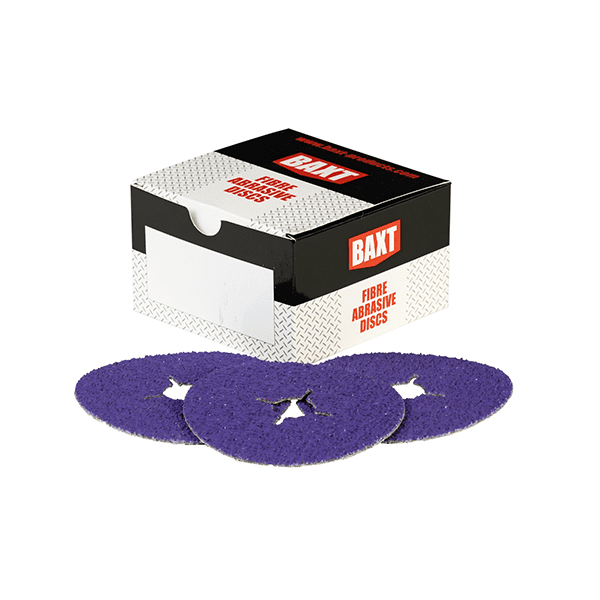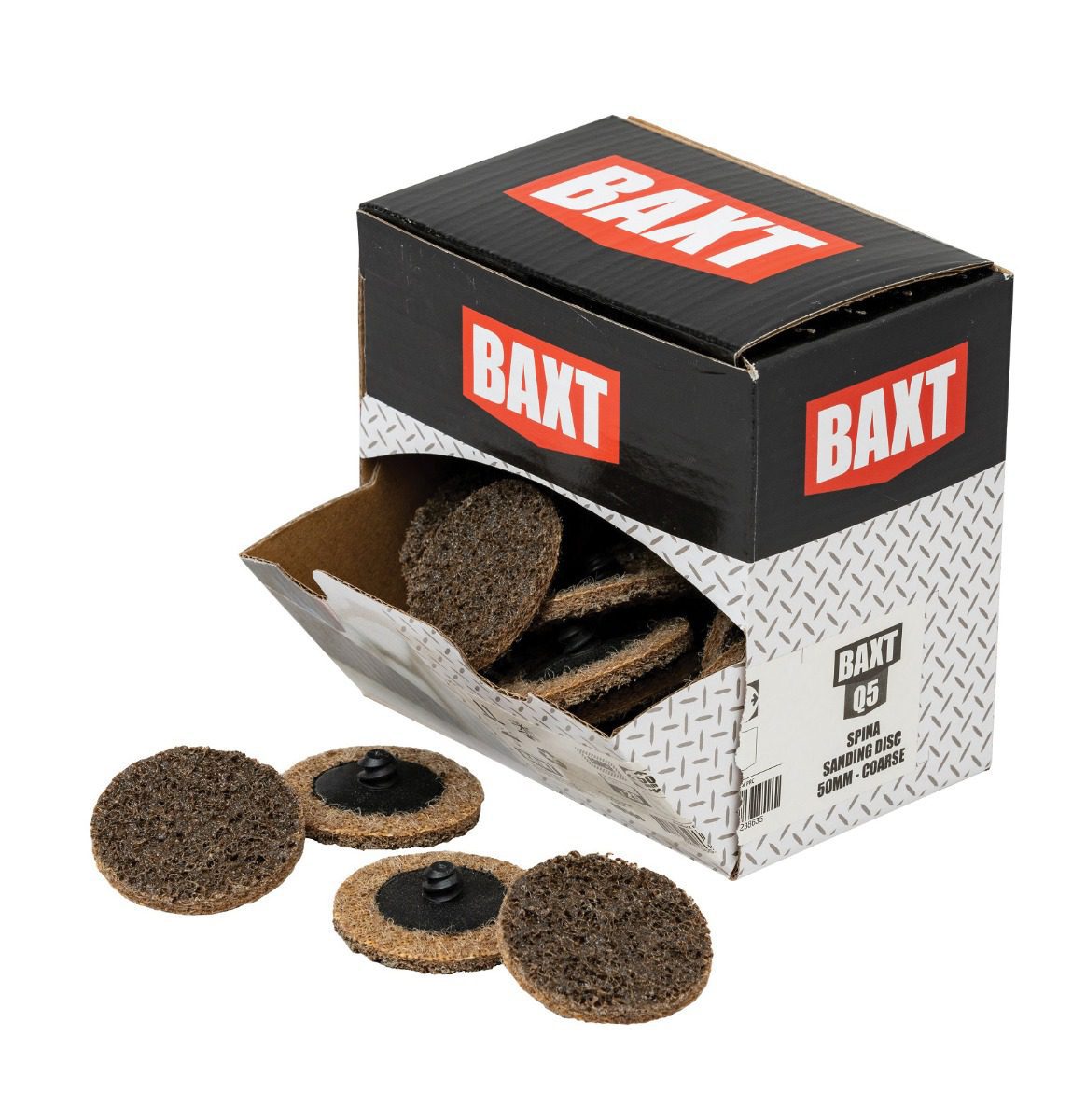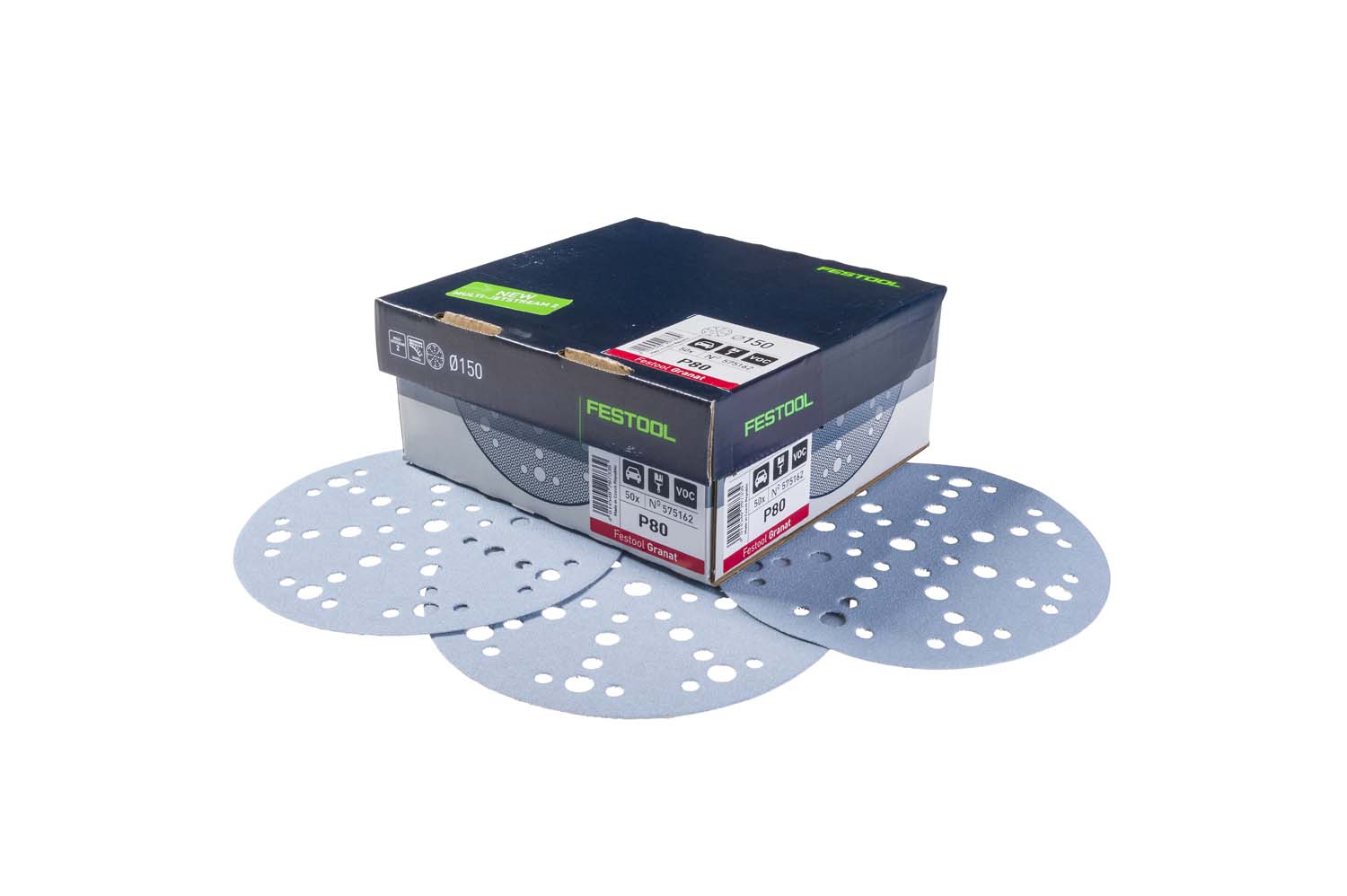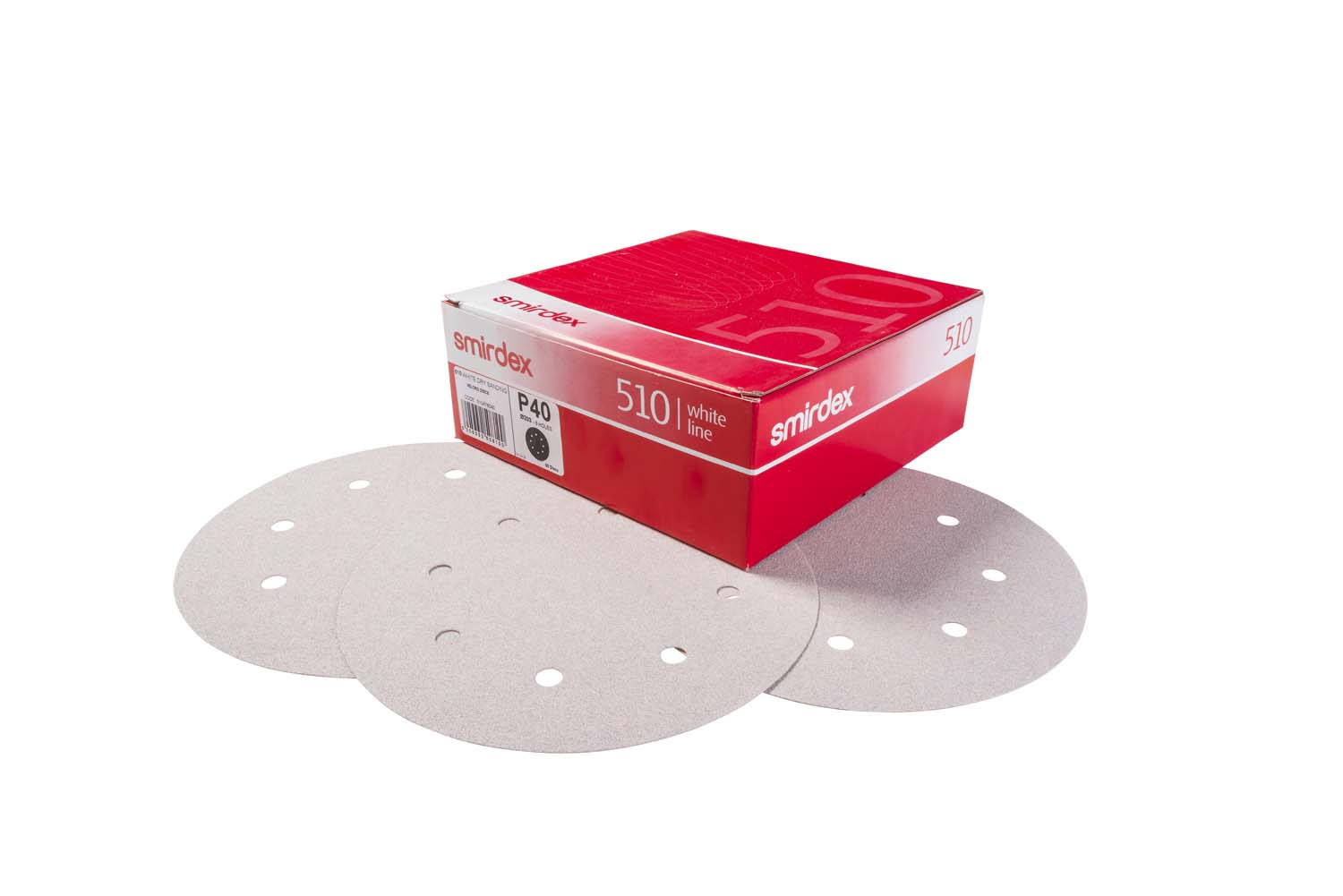Achieving a smooth and flawless surface finish often begins with choosing the best sanding discs for your project. These unsung heroes of woodworking and metalworking are essential for preparing surfaces and achieving the desired results. In this guide, we will investigate the vital aspects of selecting the best sanding discs, ensuring your projects benefit from precision and efficiency. Discover the factors that matter and the expert advice that can make your sanding tasks a breeze.
Types of sanding discs
Explore a variety of sanding disc options at DTC, including abrasive fibre, carbon ceramic, finishing, sanding DA, and sanding mini discs, each tailored to specific sanding needs. These are ideal for use with angle grinders (including flap discs), disc sanders, most orbital sanders (including random orbitals), and other rotary tools.
We discuss each of these in turn below and provide some product examples we supply too. We bring you products from leading manufacturers including 3M, BAXT, FeStool, Mirka and Smirdex.
Abrasive fibre discs
Abrasive fibre discs are indispensable tools for sanding and grinding applications. Known for their versatility, they excel in various industries, from metalworking to woodworking. These discs are designed for efficiency, offering exceptional material removal and a long service life. Explore our range at DTC for quality abrasive fibre discs.
Carbon ceramic discs
Carbon ceramic discs are high-performance abrasive tools that excel in demanding applications.
Designed with durability and precision in mind, carbon ceramic discs are ideal for metalworking and other heavy-duty tasks. View and buy from our selection of carbon ceramic discs, which have been carefully sourced from leading manufacturers.

BAXT CX4 ceramic abrasive fibre discs are available from DTC
Finishing discs
Finishing discs are employed in finishing and are excellent for producing a polished and smooth surface. It is possible to rely on these adaptable discs for precise and effective finishing in automotive and industrial applications. Shop and browse our variety of finishing discs at DTC for a wide range of discs at affordable prices.

Buy BAXT spina finishing discs for expert final polishing
Sanding DA discs
The most common applications for sanding DA discs are surface preparation and sanding. “Dual Action” is what the “DA” in “sanding DA discs” stands for. For a smoother, swirl-free finish, its dual action combines spinning and oscillating actions.
Sanding DA discs are a reliable substitute due to their durability. These are perfect for sanding and producing results of a high calibre. Sanding DA discs are available from DTC in a wide variety and at competitive prices.

3M Green hookit abrasive discs are a good example of sanding DA discs
Sanding mini discs
For fine sanding and finishing activities, sanding mini discs are commonly used. They excel at difficult tasks like surface refinishing and material removal. Learn about the assortment of sanding mini discs from DTC, which offer precision and durability for a wide range of applications in automotive and industrial projects.
Explaining grit size
It is critical to select the correct size of sanding grit for your project. The size of the abrasive particles embedded in the sandpaper is rated according to their grit size. The abrasive particles are finer, and a smoother finish is possible with higher grit numbers. The finish is coarser, and the rate of material removal is quicker as the grit number decreases.
Grit scale
Starting from lowest and moving to highest, we explain the different most popular grits below and give their abrasiveness level:
- 40 grit – coarse
- 60 grit – coarse
- 80 grit – medium
- 100 grit – medium
- 120 grit – fine
- 200 grit – fine
- 440 grit – extra fine
Backing material
Although not immediately obvious, the backing material of sanding discs plays a vital role in performance. This material impacts the flexibility, durability, and reliability of the disc for a range of tasks. Choose from cloth, fibre, and paper, using hook and loop backing is recommended:
Disc diameter and shape
It is important to buy the correct disc diameter and shape to fit your equipment and meet your needs. It should be noted that whilst discs are circular in shape, orbital sandpaper is either square or rectangular. Orbital sandpaper tends to be used for smoothing and surface preparation tasks, whereas discs can be used more broadly across a spectrum of tasks. We provide some insight below about common sizes:
Common sizes
The size you choose will depend upon your application; from our experience, the most popular sizes of sanding disc options are:
- 80mm
- 93mm
- 115mm
- 125mm
- 150mm
- 225mm
Hook and loop discs are recommended as they are available in many grit sizes and are easy to use.

These 150mm abrasive discs from FeStool are a popular choice
Shape options
The most popular shape of sanding disc is round. Square shape is also popular and other shapes are available too.
Material options
Selecting the right sanding disc based on the material you are working with ensures efficient material removal, smooth finishes, and extended disc life. Always match the disc’s abrasive properties and grit size to the specific requirements of your project for the best results and cost-effective performance.
Wooden surfaces
For woodworking tasks, sanding discs with grits suitable for wood is essential. Coarse grits for material removal and fine grits for finishing are commonly used. Abrasive discs designed for wood often have anti-clogging features to prevent resin buildup when working on softwoods or hardwoods.
Metal surfaces
Metalworking demands durable discs for sanding with abrasive grains suitable for metal. Aluminium oxide and ceramic abrasives are often used for their hardness and heat resistance. These discs excel at removing rust, paint, and weld splatter while preparing metal surfaces for further treatment.
Automotive applications
The automotive industry requires versatile sanding discs to handle various materials like metal, plastic, and composites. Discs with a combination of grits, along with a durable backing material, are essential for tasks like paint removal, bodywork, and surface preparation.
DIY projects
DIY enthusiasts benefit from multipurpose sanding discs suitable for a range of materials. These discs typically come in assorted grits and are versatile enough to handle tasks like furniture restoration, home improvement, and general sanding needs.
Durability and longevity
The durability and longevity of discs for sanding depend on several factors, and understanding these factors can help you maximize their lifespan and get the most value out of your abrasive discs.
Factors impacting disc lifespan
The following factors will all play a part in the lifespan of a sanding disc:
- Abrasive material – the type of abrasive material used in the disc greatly influences its lifespan. Some abrasive materials, like ceramic, are exceptionally durable and last longer than others, such as aluminium oxide
- Grit size – coarser grits tend to wear out faster because they remove more material with each pass. Finer grits, used for finishing, typically have a longer lifespan
- Backing material – the backing material plays a crucial role in the disc’s durability. Fiber or cloth-backed discs are more robust and resistant to tearing than paper-backed discs
- Material hardness – the hardness of the material being sanded affects disc wear. Sanding softer materials typically results in longer disc life compared to sanding hard, abrasive materials
- Pressure applied – excessive pressure while sanding can cause premature wear and reduce the lifespan of the disc
Tips for extending disc life
Follow these tips to extend the life of your sanding discs:
- Avoid overheating – overheating can cause adhesive failure. Keep the disc and workpiece cool during sanding
- Cleanliness – regularly clean the workpiece and sanding area to prevent clogging of abrasive grains, which can reduce disc effectiveness
- Optimal pressure – apply even and moderate pressure when sanding. Excessive pressure can lead to quicker wear and tear
- Proper storage – store your discs in a cool, dry place to prevent moisture or humidity from affecting their adhesive backing
- Use backing pads – when appropriate, use a backing pad (e.g., orbital sander pads) with sanding discs to provide cushioning and reduce heat buildup, which can extend disc life
Recognising signs of disc wear and replacement
There inevitably will come a time when you need to replace your sanding discs. These are the signs of wear and tear to look out for:
- Adhesive failure – when the adhesive backing begins to fail, and the disc does not adhere properly to the backing pad, it is time to replace it
- Clogging – if the disc is clogging frequently during use, it may be time for a replacement
- Loss of grit – if the abrasive grains have worn down and lost their sharpness, the disc will no longer provide effective sanding
- Reduced cutting efficiency – if you notice that the disc is no longer removing material effectively or taking longer to achieve the desired results, it is a sign of wear
- Visible wear – check the disc for signs of wear, such as a decrease in size, rounded edges, or fraying along the outer edge

Choose Smirdex as a reliable brand when choosing best sanding discs
Final thoughts
We have supplied an abundance of possibilities and information for anyone looking to buy the best sanding discs in the UK. Abrasive fibre, carbon ceramic, finishing, DA sanding, and sanding mini discs are merely a few of the numerous kinds of sanding discs which DTC offers. Our discs selection is intended to satisfy your likely sanding needs and is provided by reputable manufacturers such as 3M, BAXT, FeStool, Mirka, and Smirdex.
Choose from the following five types of sanding discs:
1) Abrasive fibre discs are versatile tools with a long lifespan and a good reputation for material removal
2) Carbon ceramic discs with high performance and long life are ideal for demanding tasks
3) Finishing discs ensure smooth and polished surfaces in industrial and automotive applications
4) Trusted uses for DA sanding discs include automotive and industrial sanding and surface preparation
5) Sanding mini discs are extremely useful for complex jobs like fine sanding and polishing
Buy the best sanding discs UK-wide from DTC
At DTC, we provide a wide range of the best sanding discs to suit your needs across a variety of applications. However, if you ever need help selecting the best sanding discs, do not hesitate to contact us.
We are here to help you choose the best sanding discs for your particular needs. Please feel free to reach out to us via the preferred method listed below:
- Contact page – click here
- Phone – 023 8025 1100, or by
- Email – sales@dtc-uk.com

